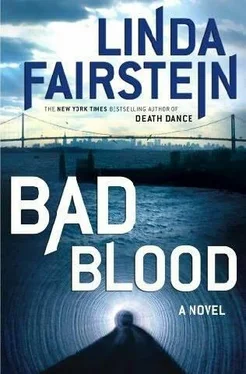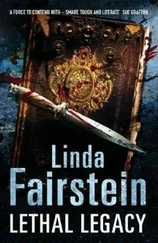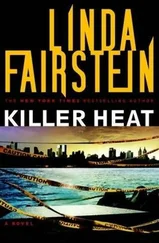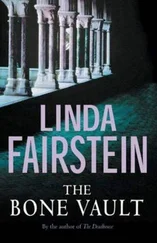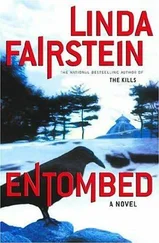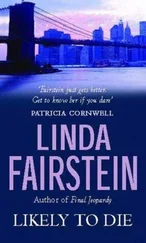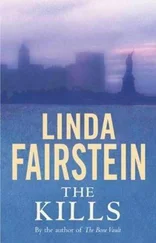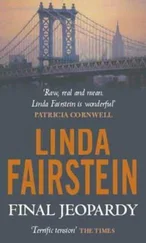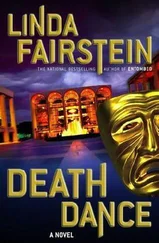“Just the kind of place we’re looking for, only Mercer didn’t have the advantage of our conversation with Phin Baylor. And Teddy O’Malley may have led us there unwittingly.”
“Where?”
“City Hall Station. The ceremonial terminal of the first subway system in New York. Maybe the most elegant station ever built.”
“But it’s closed. It’s been closed for fifty years. You’ve been inside it?”
“It was reopened briefly, to prepare for its centennial in 2004. We had to check it out as part of our Terrorist Task Force duties. The commissioner ordered it shut down again pretty quickly after 9/11. It’s directly under City Hall-too risky to chance an attack.”
“And the loop?”
“When all the passengers are disgorged from the Number Six at the Brooklyn Bridge platform, the empty train makes a sharp right turn off the local tracks onto a loop. The cars go onto the actual track of the original City Hall Station. That one was way too short to handle the longer modern subway cars, so it’s only used for a turnaround.”
“Of the Number Six?”
“Yeah, the local makes the tight curve and reappears on the uptown side-completely empty-for the ride north. In the process of looping around, it goes underground deep enough to cross under the express tracks, below grade.”
“A typical sandhog job, dug into the bedrock,” I said. “And a phantom subway station. There was even a photograph of the Quillian boys at City Hall with their father in the living room of Trish’s house.”
“You saw that? Fits Phin’s theory. Figures Brendan’s old man would have gotten them in for a visit. Transit used to give tours of the place until a few years back.”
The train jolted to a stop and the motorman announced the end of the line.
Mike charged forward, displaying his gold shield.
“You gotta get off here, buddy. I don’t care who you are. Take your date and go,” the motorman said, turning back to his controls and sliding the panel shut behind him.
Mike blocked the closing door with his body. “We’re coming with you.”
“I can’t ride nobody around. It’s the rules. You oughta know that,” the young man said, his annoyance turning to anger. “You’re making me late.”
“And you’re making me mad. Move it.”
“I could lose my job over this.”
“Go slow,” Mike said, as the car lurched ahead, around the curve into a darkened tunnel. It was listing to the right side, and I balanced myself against the railing of the first bench.
“Stop it. Right here.”
“First you wanna ride with me, now you want me to shut it down. But I can’t,” the motorman protested.
“I’ll bet you can,” Mike said, lifting his jacket back far enough to reveal the revolver on his hip.
Another sudden stop and the doors opened.
“Jump down, Coop. Be careful.”
I held on to the door handle and lowered myself to the platform, trying to adjust to the blackness around me. Mike followed as the motorman closed the doors and pulled away, the lights from within the cars flickering to reveal the arched ceilings over the narrow walkway, and the deep blue-and-tan glass lettering of the words CITY HALL.
The last rumblings of the long train grew more distant. There was nothing but darkness around us and the exquisite silence of a tomb.
Mike and I stood in place for several minutes without exchanging a word. I was listening for any sound, any noise at all to suggest someone else was anywhere within this great vaulted space. Slowly my eyes began to adjust to the blackness that surrounded us.
I whispered into Mike’s ear, “You have a plan?”
He nodded, holding his forefinger over his lips, then pointing to row after row of brick arches overhead. He mouthed a single word: “Echoes.”
I didn’t think he could get any closer to me, but he leaned in and cupped a hand over my ear. “I know where this leads. Good place to hide.”
My pulse was racing and the stillness of the abandoned station was unnerving. “Do you know how to get out once you’ve found it?”
I could see Mike’s white teeth. “I never go in unless I do. And Mercer’s up above, watching over you. We move when you hear the sound of the next train.”
It was almost six minutes before the headlights of the silver subway car cast a beam that bounced off the curved wall, followed a fraction of a second later by the noise of the steel wheels.
Mike walked quickly, still limping, to a staircase twenty feet ahead and climbed the first few steps, turning sideways and pressing against the handrail as the train passed through. I did the same thing.
I looked above me for the source of whatever natural light seemed to bathe the lower steps. I guessed that the glass skylight in the ceiling must have been situated in the park in front of City Hall, capturing and filtering the remaining rays that marked the end of the long June day.
From this vantage point, I could see the beauty of the original architecture. The tunnel was entirely without angles, the structural vaults and smooth curves continuing in a semicircle until they disappeared out of sight in both directions. Brass chandeliers without bulbs dangled from the tiled ceiling that they’d once illuminated. I tried to calm myself by studying the elegance of the century-old design, but Mike tugged on my arm and I was ready to advance with him deeper into the darkness again.
Another dozen steps and we reached the top of the staircase. Mike removed the flashlight from his pocket and shone it around the edges of the steel enclosure that sealed off the exit, pressing against it with his left hand at the same time.
“Dead end,” he said. “C’mon.”
He must have seen the anxiety in my troubled expression.
“There’s four of these doors, Coop. I know there’s still an opening in one of them. I’ve been through there.”
He shone the light so that we could descend. “Wait for the next train to go past. I don’t want any nosy motorman to see us and decide to stop,” he said when we reached the halfway mark.
Minutes later, another local hurtled through the loop to turn and begin its uptown run.
Mike led me along the platform to a second set of steps, also brightened by a second skylight.
He took the first three stairs, then stopped and focused his light on the old cobblestone. “This is the one.”
“How do you know?”
“Rat droppings. More likely people have come and gone this way-more likely there’s something to eat inside. There are guys who call themselves creepers, Alex. They find these abandoned spaces and make ways to break into them, just for sport. If I had a nose like a rat, I’d have made first grade the year I came on the job. The crawl space is up here. I’m pretty sure of it.”
He backtracked and flipped open his phone. “Mercer? Can you hear me?” he said. “Yeah, it’s breaking up because I’m in the tunnel. Inside the old City Hall Station. Call Peterson. We mapped this all out for the task force a couple of years back. Have him cover the exits and entrances…What? What? Can’t hear you.”
Mike started up the steps again. He turned and saw me looking over my shoulder at the train tracks. He held up his thumb like a hitchhiker on the road. “Out?”
I caught up to him.
“Look, I can wave down a motorman. Get one to take you out,” Mike said softly.
I hesitated but didn’t answer.
“It’s like a rabbit warren inside. An old wooden ticket booth, subway cars that have rotted out over time, piles of old IRT station signs. If Brendan Quillian is actually hiding here, I promise I’ll call in the cavalry. I just think Teddy O’Malley is playing some kind of cat-and-mouse game with me and I want to see what it is.”
Читать дальше
